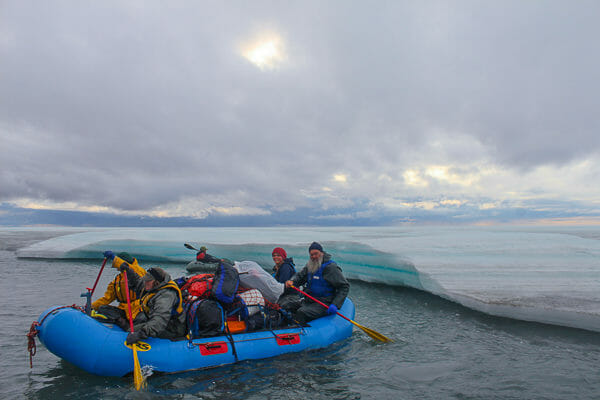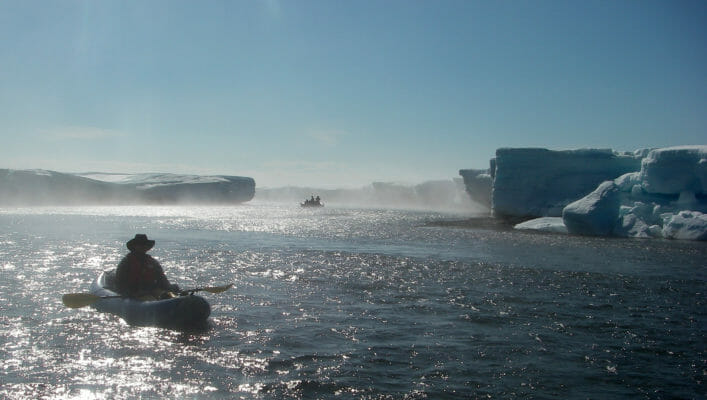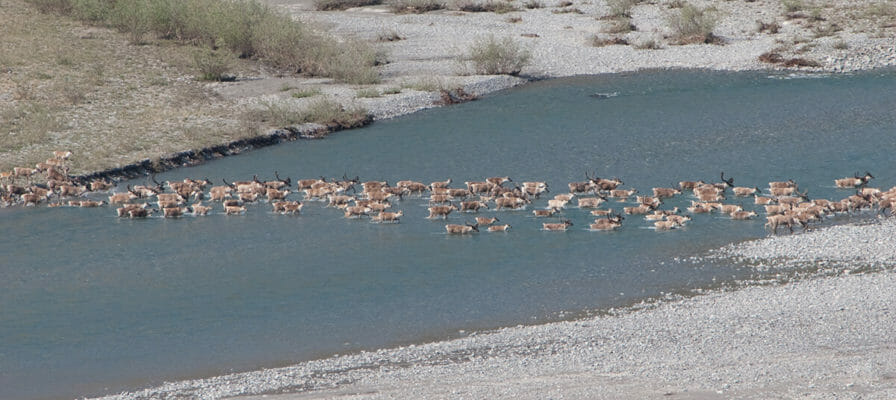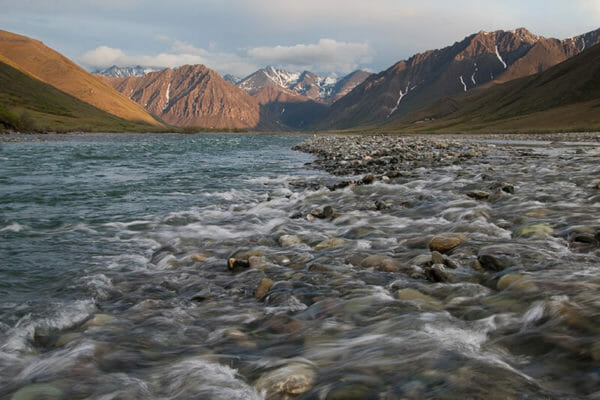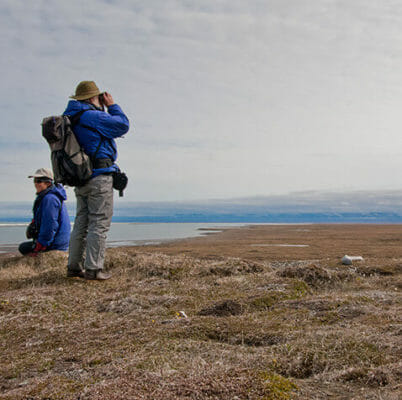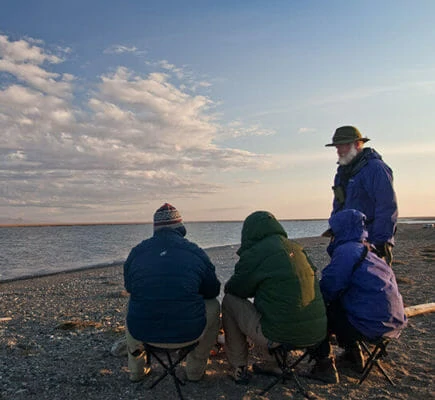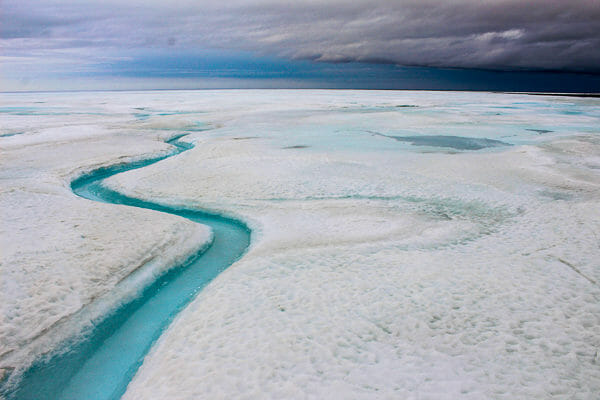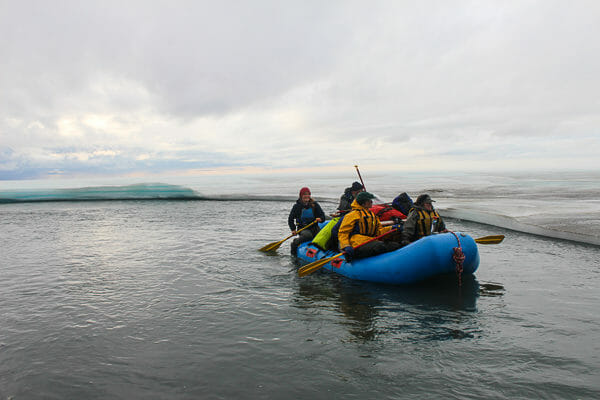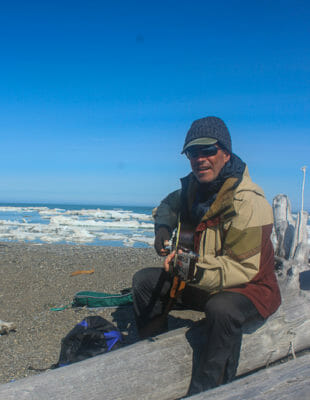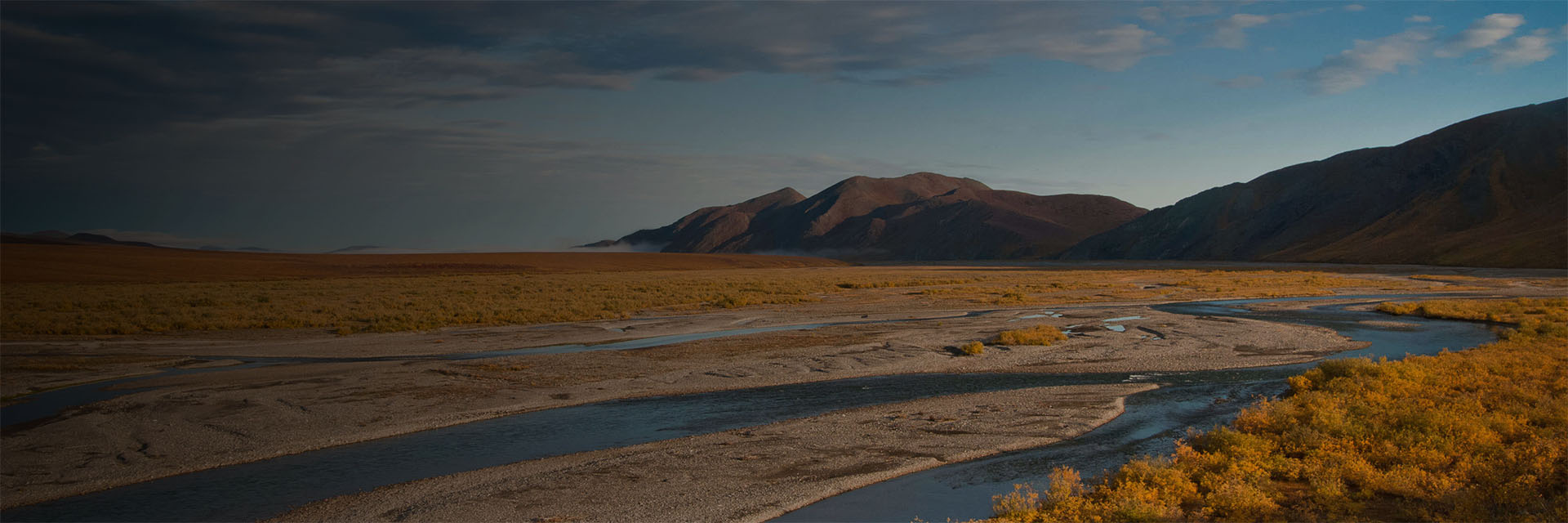Last updated: September 27, 2022
Itinerary
What follows is a general flow of events. Expect the unexpected and prepare to be flexible.
June 24
Meet with your guide(s) for a pre-trip meeting at 4 pm in Fairbanks at Arctic Wild headquarters.
June 25
Fly north from Fairbanks across the mighty Yukon River and over the Arctic Circle. Land in the Athabaskan Indian settlement of Arctic Village, population 120 and then to the Kongakut. Once the plane goes, we are on our own in the immense and quiet landscape.
June 26 - July 1
At any time during the week, we could see caribou, a grizzly bear or two, a wolf, or other arctic wildlife. On paddling days, we’ll travel from 6 to 8 hours per day. We will pull ashore several times each day for brief forays, lunch, or to watch wildlife. At day’s end, we’ll choose a nice dry camp. There will be free time for group and personal pursuits each and every day. Evenings and mornings are good times to explore our surroundings. Guides will lead informal natural history hikes, but you are also welcome to go off on your own.
We usually plan three or four “layover days” on the Kongakut. Our first day-hikes will be in the vicinity of Whale Mountain. This area affords us great opportunities for gaining elevation, admiring wildflowers covering the slopes, and hopefully watching Dall sheep.
We will take another layover before we leave the foothills, where we’ll climb tall slopes for a panoramic view of the arctic. From the broad summits of these 2,000-foot maroon-colored foothills we can survey the breadth of the Brooks Range and the arctic Coastal Plain all the way to the Arctic Ocean.
Time permitting, we’ll also take a layover on the Coastal Plain to walk the tundra expanses colored in cream by Dryas flowers. We often see Tundra Swans on nests in the shimmering distance and caribou gathered on aufeis.
Our final layover will be on the arctic coast. Hiking along the beaches is excellent and a pretty good workout. Depending on sea ice conditions, we may be able to climb an icy “pressure ridge” formed by the frozen Arctic Ocean.
July 2
Await the arrival of our bush pilot, who will land on the beach. We will fly south across the breadth of the Arctic National Wildlife Refuge. Weather permitting, we arrive back in Fairbanks by dinner time.






